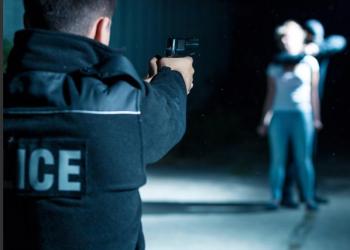
When is the Use of Deadly Force Lawful? And Does “Legal” Equate to Right?
An officer’s use of deadly force must be objectively reasonable under the circumstances to be lawful.
Where a suspect no longer poses an immediate threat, is not showing signs of danger or fight, an officer must cease the use deadly force. The doctrine of qualified immunity shields officers from civil liability — as long as their conduct does not violate the clearly established statutory or constitutional rights of which a reasonable person should have known.
Parents and children have a Fourteenth Amendment due process interest in the companionship and society of their children and parents, respectively. However, to challenge the denial of this due process right in a civil court, an officer’s actions must be shown to be so extreme as to have “shocked the conscious” of the court.
Municipalities may be vicariously liable for the unconstitutional acts of their employees under the theory of “respondeat superior.” However, this theory of civil liability applies only when it is shown that the municipality had a deliberate policy, custom or practice that was the moving force behind the constitutional violation.
California’s Bane Act (Civil Code § 52.1) authorizes a civil action against anyone who interferes, or tries to do so, by threats, intimidation or coercion, with an individual’s exercise or enjoyment of rights secured by federal or state law.
On the afternoon of April 22, 2020, two uniformed Los Angeles Police Department officers happened upon a multi-vehicle accident at San Pedro and East 32nd streets in Los Angeles, apparently just after it occurred. As the officers were getting out of their vehicle, the car’s police radio relayed information about the accident, stating that the “suspect’s vehicle” was “black,” and that the occupant was a “male armed with a knife.” Bystanders and occupants of the vehicles involved in the accident all pointed out a male, later identified as Daniel Hernandez and who was still seated in his black pickup, as the driver who caused the accident. The officers were also told that the man had a knife and was trying to “hurt himself.” The police radio also announced that the suspect, still “inside his vehicle,” was “cutting himself.”
The officers approached Hernandez’s smashed pickup. Hernandez began to climb out of the driver’s side window as one of the officers pulled out her firearm. The officers twice yelled to him: “Let me see your hands!”
A shirtless Hernandez emerged from his pickup carrying what appeared to be a knife. The officer who had her gun drawn held out her other hand, signaling for him to stop, and shouted: “Stay right there!” It is unknown from this point on where the second officer was or what he was doing. Hernandez advanced toward the officer, continuing to do so as that officer yelled three times, “Drop the knife!” The officer backed up until she was standing directly in front of the patrol car. Hernandez began yelling as he continued to approach her, raising his arms by his sides to about a 45-degree angle. The officer again shouted, “Drop it!” As Hernandez continued yelling and advancing, coming to within 41 to 44 feet of the officer, still with his arms raised at a 45-degree angle, the officer fired an initial volley of two shots, causing Hernandez to fall to the ground.
He landed on his right side, but still held the weapon with his right hand. He began to push himself up again while continuing to yell. As he got to his knees, and with the officer yelling again to “drop it,” Hernandez started to stand up. The officer fired two more shots. Hernandez fell to the ground again while still holding the weapon. As he began to roll over from his back onto his left side, the officer fired another, the fifth, shot. Hernandez placed his left elbow on the street as if to push himself up again, but collapsed. As he did so, the officer fired the sixth and final shot. The weapon — discovered to be a box cutter with two short blades — was still in his right hand. The whole incident lasted no more than 20 seconds. All six shots were fired within eight seconds. Hernandez died at the scene.
Hernandez’s parents and minor child later filed separate 42 U.S.C. § 1983 lawsuits in federal court, alleging various constitutional violations which were eventually combined for all purposes. The plaintiffs also filed a consolidated complaint against Los Angeles, the LAPD and the officer. In combination, the various lawsuits alleged three federal claims that remained at issue in this appeal: (1) a Fourth Amendment excessive force claim brought against the officer by plaintiffs, acting on behalf of Hernandez’s estate; (2) a 14th Amendment claim for interference with familial relations brought by the plaintiffs on their own behalf against all defendants; and (3) a claim under Monell v. Department of Social Services of the City of New York (1978) 436 U.S. 658, on behalf of the estate and themselves, against the city and LAPD.
In addition, the complaint asserted state law claims for assault, wrongful death and violation of the Bane Act.
The federal district (trial) court granted the civil defendants’ motion for summary judgment on all claims, thus dismissing the lawsuit. The court held that, as a matter of law, the officer (1) did not use excessive force in violation of the Fourth Amendment but that, even if she did, (2) she was entitled to qualified immunity. The plaintiffs appealed.





